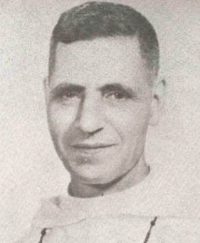We had to suspend the special high school classes, after learning that other colleges which opened similar classes had been investigated and ordered to close. The new regime does not approve of gatherings of young people without its permission. However, we obtained permission to continue with the classes in the secretarial course, which consists of typing, stenography and bookkeeping, on condition that we would not allow the use of any textbook.
On the elementary level, the textbooks to be used are prescribed to the exclusion of all others. All those subjects, the textbook of which are included in the list of prohibited books, had been abolished, so that the teaching of geography, history, government, and English grammar is not allowed. Only one book is permitted each for Reading, Arithmetic, Conduct, and Hygiene. English has been tentatively authorized as medium of instruction. The plan is to eliminate it gradually, substituting it with Japanese.
All passages and everything which is considered objectionable have been eliminated from the approved textbooks. Pages where the names of places and persons pertaining to Europe and America are mentioned were covered with thick paper. Consequently, these books induce the curiosity of the pupils. Even the pictures of Quezon and Osmeña and the Filipino flag, as well as all references to them, were also covered.
Religious instruction is allowed, but only under two conditions: that it would be carried out outside the regular class hours, and that no textbooks or catechism books would be used.
The school year was divided into four, called the quarterly system. Between quarters there is a week of vacation. This system was already being debated upon last year, advocated by Camilo Osías, but it was rejected by most educators and by the public. Since Osías is now the Deputy Commissioner of Education, and since this is the school calendar used in Japan, it was easily imposed by the Japanese technical advisers.
